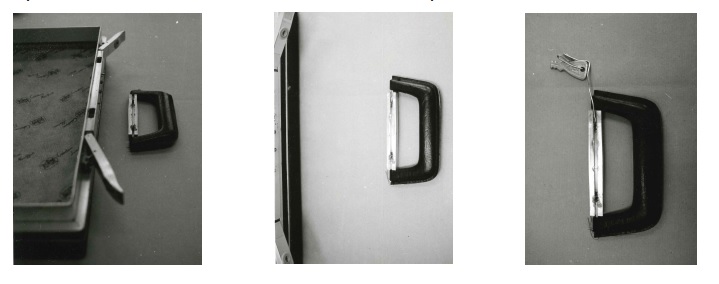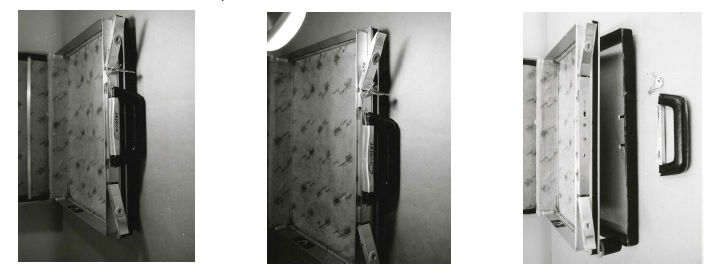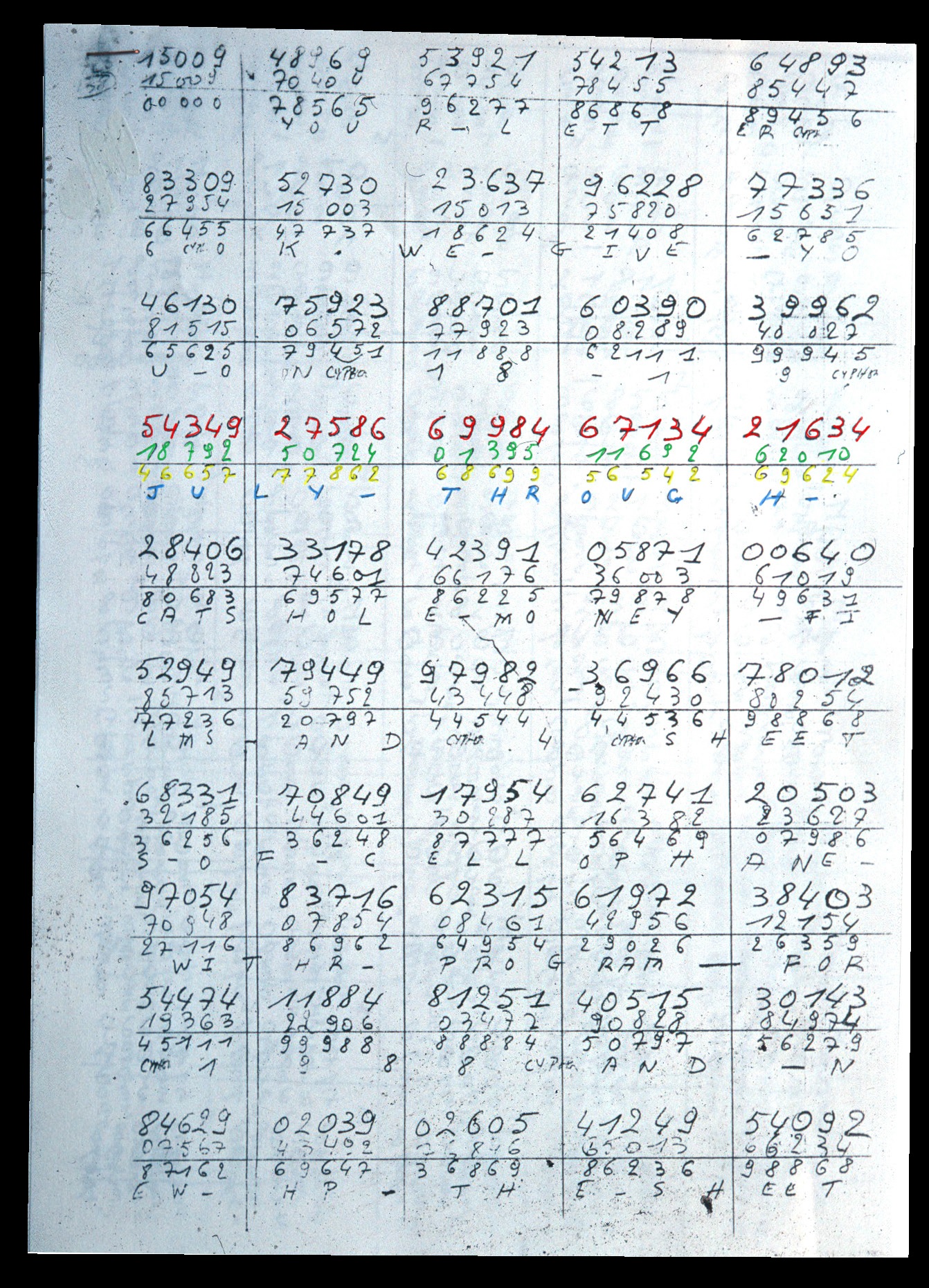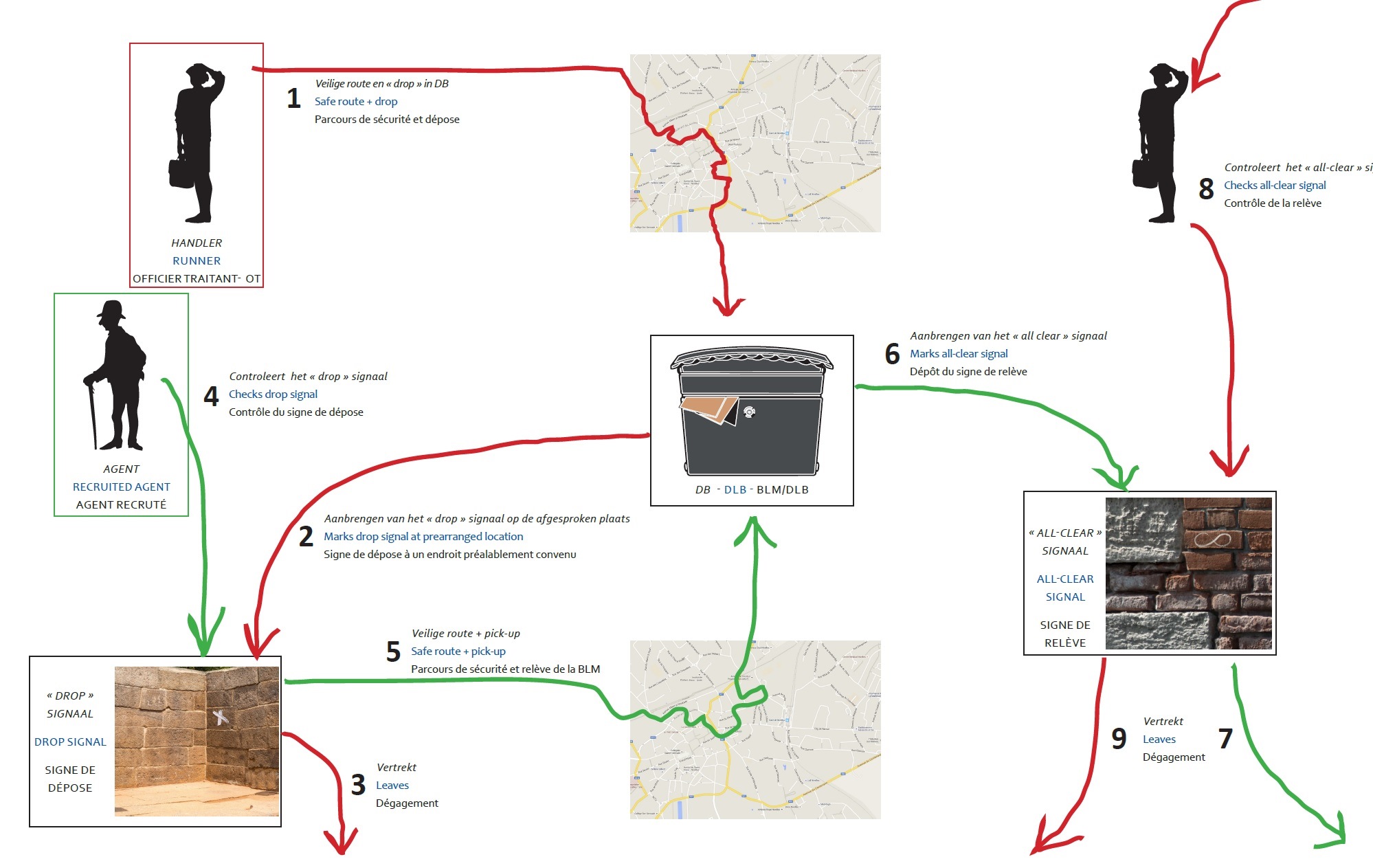| Previous page | Back to exhibition’s homepage | Next page |
| Contents: 1. Introduction 2. Binet’s briefcase 3. Radiocommunication between Binet and his clients 4. Dead letter box |
|
|
|
Introduction | Introduction | Introduction |
| Lieutenant-Colonel Binet, in service with the Air Force, fall, early years 80 in the crosshairs of the Soviet military intelligence service, the GRU (Glavnoje Razvedyvatelnoje Upralvlenija) while he attends cultural and theme evenings organized by the “Belgo-Soviet Friendships”. It is during such activities that the GRU tries to come into contact with people who seem interesting to them.. During one of these evenings, he is approached by a certain ‘Pjotr’, who presents himself as the deputy of the Soviet military attaché. In reality, Pjotr is a ‘spotterre recruiter’ for the GRU. Lieutenant-Colonel Binet, who is not pro-American but rather in favor of a Cold War status quo, remains open to the proposal of further contacts. | In the early 1980s, Air Force Lieutenant Colonel Guy Binet got on the radar screen of the Soviet military intelligence agency – aka the GRU (Glavnoje Razvedyvatelnoje Upralvlenija) – after attending several cultural and theme evenings organised by the “Amitiés belgo-soviétiques”. On these occasions, the GRU used to make attempts at weaving ties with interesting people. During one of these events, Binet was approached by a certain “Pjotr”, who pretended to be the assistant of the Soviet military attaché. In reality, Pjotr was a “spotter-recruiter” for the GRU. Binet, who was not pro-American but rather advocated for a status quo in the Cold War, kept the door open for further contact. | Lieutenant Colonel Guy Binet, in service with the Air Force, comes into the sights of Soviet military intelligence in the early 1980s, by GRU (Glavnoje Razvedyvatelnoje Upralvlenija) after attending some theme- and cultural evenings organized by the “Amitiés belgo-sovétiques”. On these occasions the GRU tries to make contact with interesting people. On one of these evenings Binet is approached by a certain 'Pjotr', who poses as deputy to the Russian military attaché. In reality, Pjotr is a “spotter recruiter” for the GRU. Binet, who is not pro-American, and is in favor of freezing the Cold War, is open to further contacts. |
| While he was promoted to colonel with responsibility for the Air Force budget, the Soviets try their luck. They confuse him with photos of his meetings with Soviet personalities during theme evenings and express threats against his family. Lieutenant-Colonel Binet feels stuck and agrees to cooperate. He meets one of the GRU leaders in Vienna, who asks him to provide the Soviets with NATO documents. | When he was promoted colonel responsible for the budget of the Air Force, the Soviets seized their chance. They confronted him with pictures of his contacts with Soviet bigwigs during the theme evenings, and uttered threats against his family. Binet felt cornered and agreed to collaborate. In Vienna, he met one of the high-ups of the GRU, who asked him to provide Soviets with NATO documents. | When he is promoted to colonel with responsibility for the Air Force budget, the Soviets seize their chance. They confront him with photos of his meetings with Soviet prominent figures during the theme nights and make threats to his family. Binet feels cornered and agrees to collaborate. In Vienna he meets one of the top people of the GRU, who asks him to deliver NATO documents to the Soviets. |
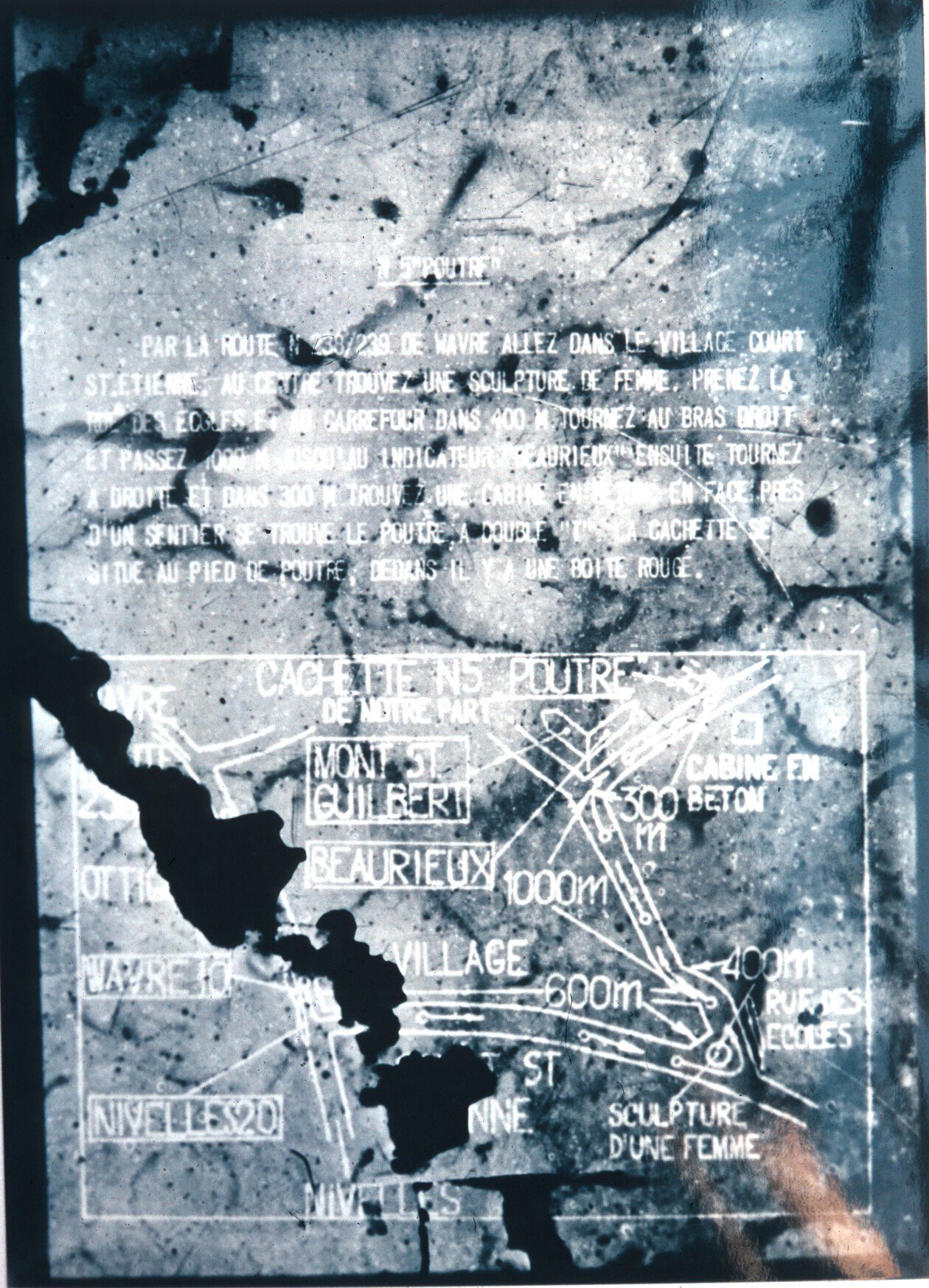 |  |
| The meeting is observed by US military intelligence (Defense Intelligence Agency). They informed the Belgian military counter-espionage of the time, the SDRA III section of the SGR. A research team was created there and after more than a year of investigation and shadowing, the SGR confronts Lieutenant-Colonel Binet with his espionage activities. To the automne 1988, he is heard and quickly makes a full confession. The closed-door trial begins in 1989. Lieutenant-Colonel Binet is finally sentenced to 20 years of forced labor and is degraded. Binet is released early after 5 years of imprisonment. He then led a life in anonymity until his death in 2000. | But the gathering was monitored by the American Defense Intelligence Agency. The latter alerted SDRA III – the then counterintelligence department of the Belgian military intelligence and security service (SGR) – to the situation. An investigation team was formed, and after more than a year of shadowing and investigation, the SGR confronted Binet with his espionage activities. In autumn 1988, Binet was heard and quickly made full confession. In 1989, the trial was held behind closed doors. Binet was ultimately sentenced to 20 years’ hard labour and military degradation. After 5 years’ imprisonment, Binet was granted early release and lived an anonymous life until his death in 2000. | However, the meeting is recorded by the American Defense Intelligence Agency. These state SDRA III, the then counterintelligence section of Belgian military intelligence- and security service (SGR), informed of this. A research team is set up and after a good year of intensive shadowing and research, confronts SGR Binet with his espionage work. In the fall of 1988 Binet is interrogated and he quickly makes full confessions. In 1989 the process will start behind closed doors. Binet is eventually sentenced to death 20 years of forced labor and military degradation. Binet follows suit 5 years in prison, is released early and then leads to an anonymous existence his death 2000. |
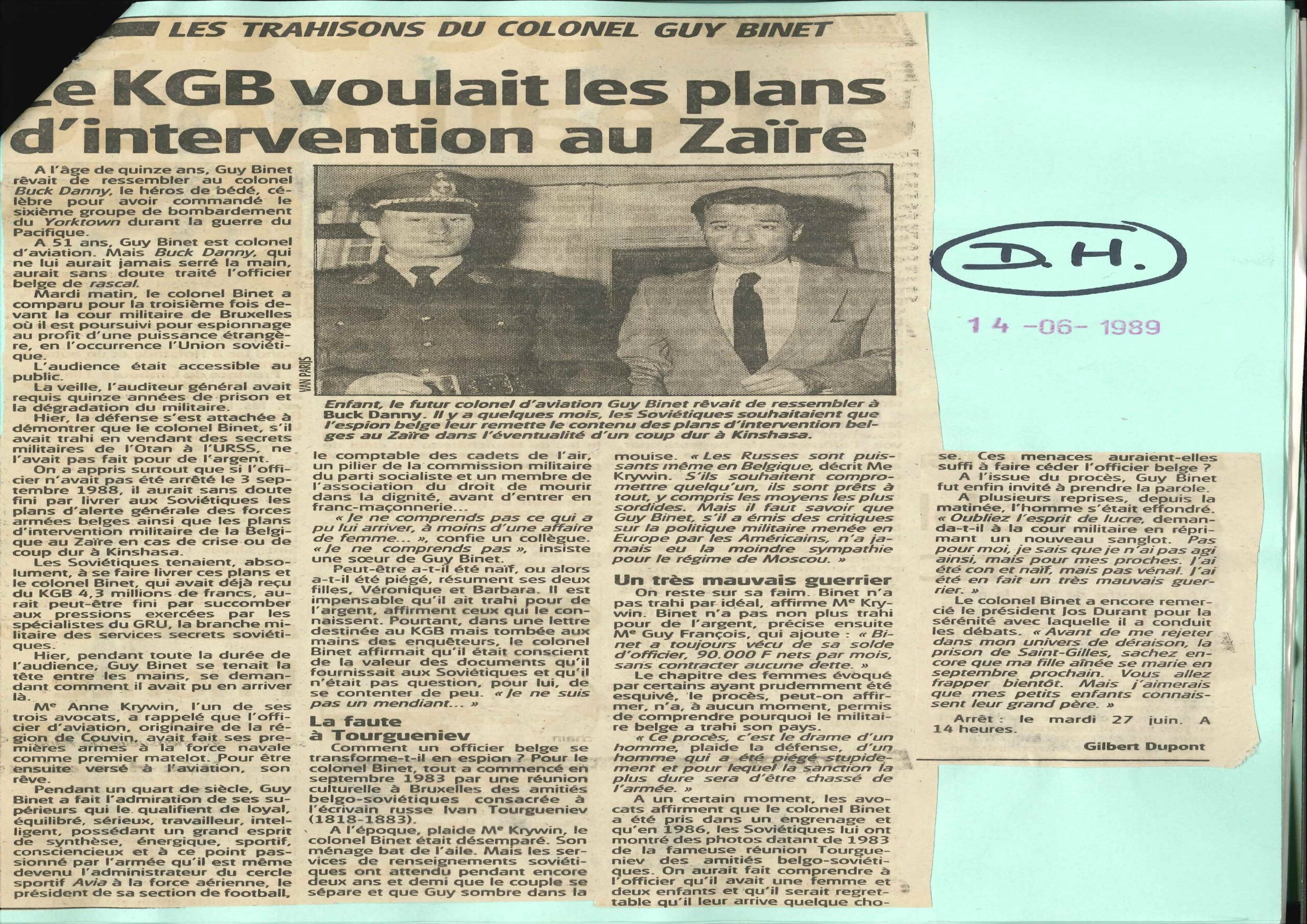 | 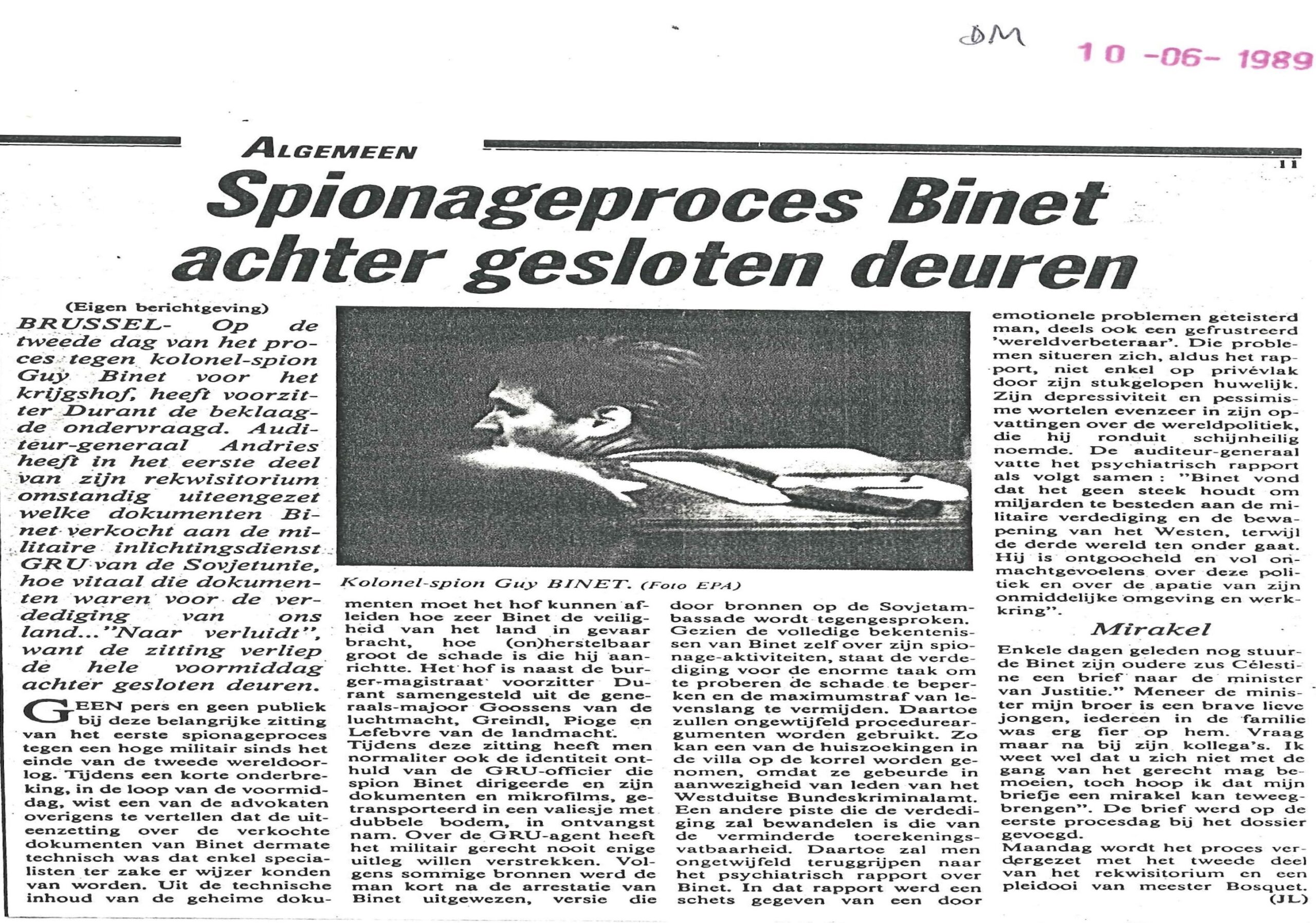 |
Binet's briefcase | Binet’s briefcase | Binet's suitcase |
| Binet brings home copies of the documents he wants to give to the GRU. He then photographs these documents with one of the two MINOX devices provided by the GRU. | Binet brings back home copies of documents that he wants to hand over to the GRU. He then takes pictures of these documents with one of the two MINOX cameras provided by the GRU. | Binet takes home copies of the documents he wants to hand over to the GRU. There he photographs the documents with one of the two MINOX devices which he received from the GRU. |
| To get these documents out of the General Staff without being noticed, Binet uses a double bottom briefcase. The hidden compartment opens using a simple but ingenious system. | To smuggle the documents out of the General Staff without arousing suspicion, Binet uses a false-bottom briefcase. The secret compartment is opened using a simple, yet well thought-out system. | To smuggle these documents out of the General Staff buildings unnoticed, Binet uses one briefcase with a double bottom. The secret hiding place opens according to a simple but sophisticated system. |
| Indeed, to access the double bottom, Binet uses a paper clip which acts as a key ring for the briefcase key. | To get access to the false bottom, Binet uses a paperclip that acts as a key ring for the key of the briefcase. | To open the double bottom, Binet uses a paper clip that serves as a key ring for the key to the briefcase. |
This is how Binet accessed the double bottom.
This is how Binet could get access to his secret compartment.
In this way Binet can open the double bottom.
Radio communication between Binet and its sponsors | Radiocommunication between Binet and his clients | Radio communication between Binet and his clients |
Listen to the Russian operator:
| First line: The pentagrams (= group of 5 numbers) noted by Binet while listening to radio communications. For this purpose, Binet received a radio device you HORRIBLE, coded messages are transmitted to him on certain dates and times. If Binet were to miss a transmission, a reserve date and time were planned. | First line: The pentagrams (= group of five digits) written by Binet when listening to radio communications. To do so, Binet received a radio from the GRU. The encrypted messages were transmitted on a specific date and at a specific hour. Should Binet miss the initial message, a reserve date and hour were also provided. | First line: The pentagrams (= group of five digits) which Binet noted while listening to the radio communications. Binet received one for this radio of the GRU. The coded messages were broadcast at certain dates and times. A reserve date and time was always provided, in case Binet missed the initial message. |
| Second line: In the next series, we see the pentagrams coming from a decoding table. This table was recorded on a piece of paper, hidden in a marker pen. At the start of each transmission, Binet received a clue allowing him to know which series of pentagrams he should use. After use, Binet had to destroy the game with the pentagrams used. | Second line: The following series shows the pentagrams from a decoding table that was written on a little piece of paper hidden in a marker. At the beginning of every transmission, a clue allowed Binet to know what series of pentagrams he needed to use. Afterwards, Binet tore the used piece of paper and destroyed it. | Second line: Another set of pentagrams that Binet took from a decoding table. This decryption table was hidden in a rigid. At the beginning of each received message was an indication of which series of pentagrams from the deciphering table Binet should use. After use, he tore off the piece and destroyed it. |
| Third line: Difference between lines 1 and 2, without taking into account decimal places. | Third line: Difference between line 1 and line 2, without taking decimals into account. | Third line: The difference between line 1 and line 2, without taking the decimals into account |
| Fourth line: A conversion code, written on a small piece of paper in the wallet by Binet, allowed the latter to convert numbers into letters. Therefore, he got an understandable message. | Fourth line: Thanks to a conversion code written on a paper in his wallet, Binet could convert digits into letters. He then obtained a readable message. | Fourth line: Based on the conversion code on a small piece of paper from Binet wallet he could convert the numbers into letters. This way he received a readable message. |
Dead mailbox (BLM) | Dead letter box (DLB) | Dead mailbox (DB) |
| A BLM is a cache used by a processing officer (OT) and his agent to transmit instructions or documents to each other without meeting. It is preferably located in a public place where both people can go without attracting attention.. | A DLB is a cache used by a handler and his agent in order to pass instructions or documents without meeting each other. The cache is preferably located in a public area where both persons can go without arousing suspicion. | A DB is a hiding place used by the handler and its agent to pass instructions or documents to each other, without meeting each other. The DB is usually in a public place where the two people can come without attracting attention. |
| Plan | Scheme | Schema |
1. The OT carries out a safety route and completes the BLM.2. The OT leaves a drop-off sign at a previously agreed location.3. The OT leaves the area. 4. The Agent checks the drop-off sign. 5. The Agent carries out a security tour and reports to the BLM. 6. The Agent files a sign of relief. 7. The Agent leaves the area. 8. The OT controls the relief sign. 9. The OT leaves the area. | 1. The handler takes a safe route and fills the DLB. 2. The handler leaves a “drop” signal at a prearranged location. 3. The handler leaves the area. 4. The agent checks if the “drop” signal is present. 5. The agent takes a safe route and empties the DLB. 6. The agent leaves an all-clear signal. 7. The agent leaves the area. 8. The handler checks if the all-clear signal is present. 9. The handler leaves the area. | 1. The handler follows a safe route and drops something into the DB. 2. The handler makes a mark at an agreed location. 3. The handler leaves the zone. 4. The agent checks whether the sign of the drop is present. 5. The agent follows the safe route and clears the DB. 6. The agent places a sign that the DB has been cleared. 7. The officer leaves the zone. 8. The handler checks the character indicating that the DB has been lifted. 9. The handler leaves the zone. |
| Previous page | Back to exhibition’s homepage | Next page |
